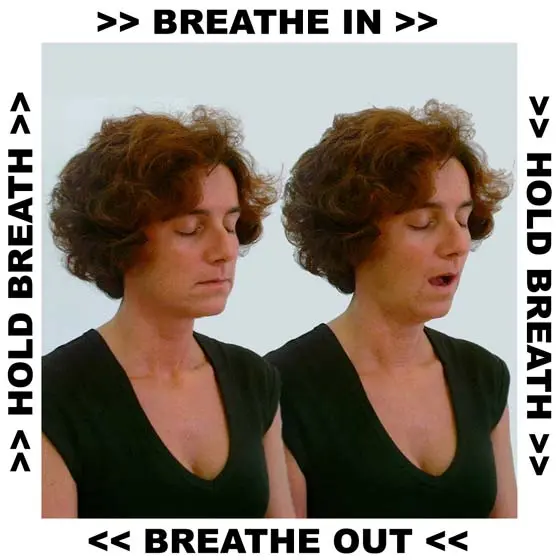|
Qi Energy Exercises
|
Qi Breathing Exercise 4 Breathe in a SquareBreathing has more to give than what the previous exercises reveal at first — a lot more. When you have a good belly breathing going, it has a power and a depth that are vitalizing and cleansing, reminding of its closeness to qi.
Breathing can be an even more direct help to awake and increase your qi flow. The following breathing exercise has this purpose. Now it is time to breathe qi. How that works is explained in the exercise description, but do not focus solely on this aspect. Do it like a pure breathing exercise. Otherwise there is a risk that your conscious mind takes over and brushes the bodily experience aside. That will not help your qi flow. So, settle for what a pleasant and calming way of breathing it is. Then qi can flow freely through your body, instead of being hindered by your conscious ambition to steer it.
How to do it
This exercise is an excellent way of getting familiar with qi and its nature, how qi feels and works. You will probably notice that the breathing without air is just as invigorating as regular breathing, although in a different way. The best way to describe it is that you breathe pure inspiration — or intention. But whatever words we choose for it, they are bland when compared to the actual experience. So when you do the exercise, concentrate on the experience and do not bother to interpret it intellectually. That would only disturb it. Of course, when you get more used to this exercise, you can skip the step where you breathe air only, in two phases. Go directly to the square, with four phases of breathing. You should also practice your ability to recognize your qi breathing when you breathe normally. It is there, as well. That should be increasingly obvious to you. Also when you are breathing in a square, you do good to focus on your qi breathing in all the four phases. The differences between breathing air and no air should dissolve by time, and lose their significance. The essence of your breathing should be its qi flow, and you can feel it all through. It is also good to extend the length of time you choose, when you get better at this. You should never make the time so long that you feel frustrated during the fourth phase, before breathing in anew. That phase is the most difficult to extend, so it should be decisive when you choose the length of the intervals you try. It is not a competition of any kind, so you need only to find a time that is optimal for your experience of the exercise.
Qi Breathing ExercisesHere is a set of simple breathing exercises designed to increase your qi energy flow. I recommend that you do them in the given order, when you try them out. Once you've become familiar with them, you can do them in any order you please. Trust your instincts.
Qi Energy Exercises
Qi Exercise Settings
Qi Energy Breathing
Qi Posture
Qi Relaxation
Qi Extension
Qi Centering
The Book
My Books About Life EnergyHere are the two books I have written on the subject of life energy. This website contains some of the material from the first one. Click the image to see the book at Amazon (paid link).
About CookiesMy Other WebsitesLife EnergyThe many life force beliefs all over the world, ancient and modern, explained.
TaoisticTaoism, the old Chinese philosophy of life, based on Tao, the Way. Also, the complete Tao Te Ching translated and explained.
AikidoAikido, the peaceful martial art. Its basics, principles, techniques, and more — in texts, images and videos.
I Ching OnlineThe 64 hexagrams of the Chinese classic I Ching and what they mean in divination. Free online reading.
Other Books by MeClick the image to see the book at Amazon (paid link).

Stefan StenuddAbout Me I'm a Swedish author and aikido instructor. I've written several books about aikido, qi energy and other life force concepts. I'm also an historian of ideas, researching the thought patterns in creation myths. Click the image to get to my personal website. Contact
|
 Qi — Increase Your Life Energy
Qi — Increase Your Life Energy


